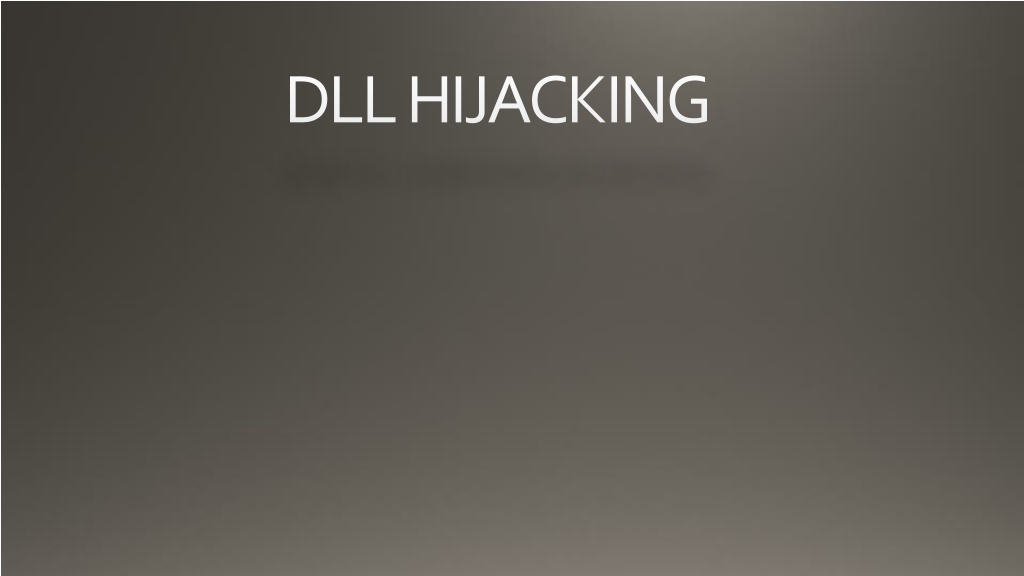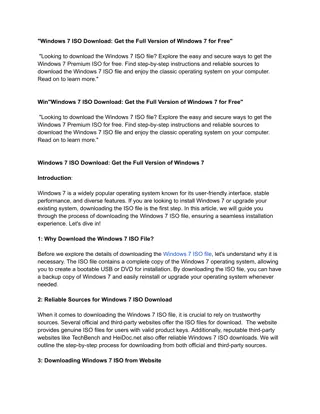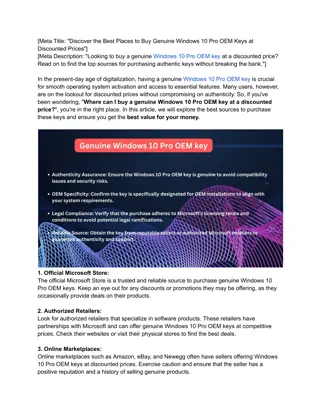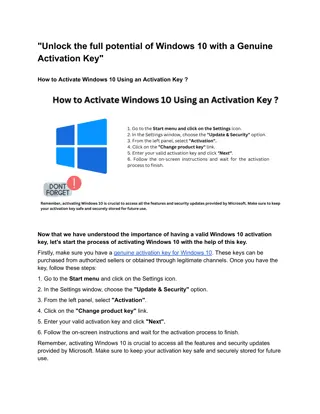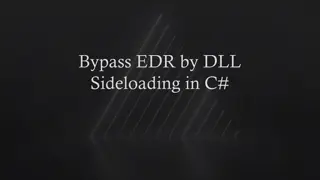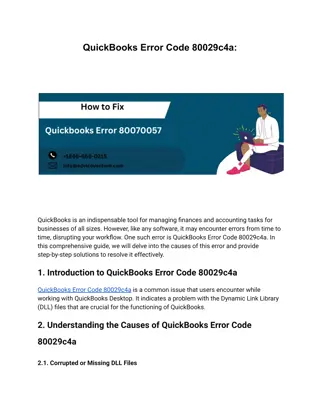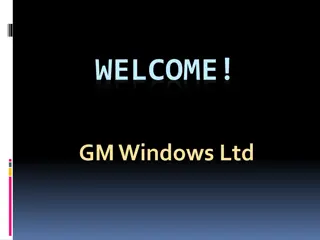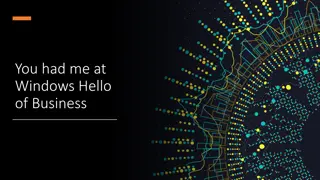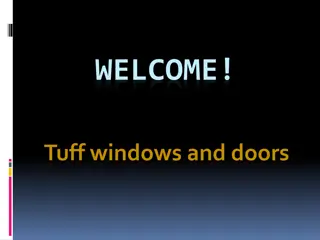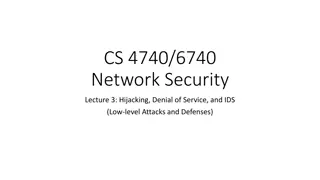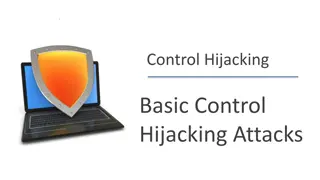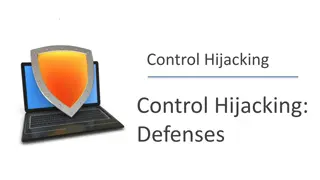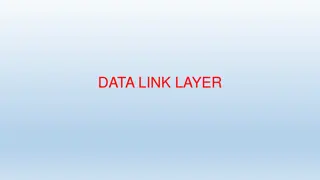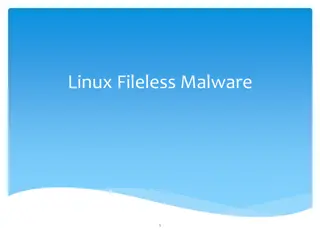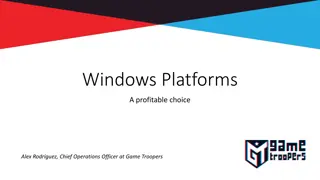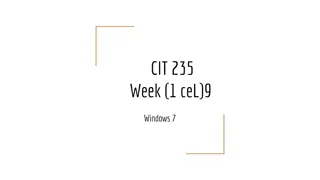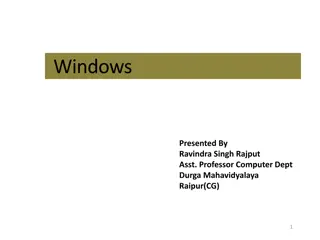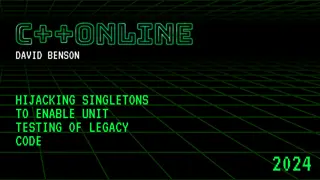Understanding DLL Hijacking in Windows
Dynamic-Link Libraries (DLLs) are a mechanism in Windows for sharing code and data, making it easier to design and build applications. By loading DLLs either statically at compile time or dynamically at runtime, programs can enhance memory management and user experience. However, DLL hijacking, a common attack vector, exploits the way applications search for and load DLLs, allowing attackers to substitute legitimate DLLs with malicious ones higher in the search order.
Download Presentation

Please find below an Image/Link to download the presentation.
The content on the website is provided AS IS for your information and personal use only. It may not be sold, licensed, or shared on other websites without obtaining consent from the author. Download presentation by click this link. If you encounter any issues during the download, it is possible that the publisher has removed the file from their server.
E N D
Presentation Transcript
What are DLLs? - - Dynamic-Link Libraries Mechanism in Windows to share code and data DLL DLL Code and Data Code and Data Why use DLLs? - Easier to design and build an application - Allows for better Memory management Windows Application Windows Application User
DLL DLL Code and Data Code and Data Windows Application Windows Application User - Programs can load DLLs in two ways: - Static (Compile Time) Load - Dynamic (Run Time) Load
Dynamic (Run Time) Load - Main mechanism for DLL Hijacking - LoadLibrary function (Windows API) -Function that is used to load an external module, i.e. a DLL or another EXE into the calling processes address space HMODULE WINAPI LoadLibrary( _In_ LPCTSTR lpFileName ); - lpFileName can be either file name, or an absolute/relative path - LoadLibraryEx, another related function - Still uses lpFileName, along with two additional input parameters - Suffers from same vulnerability if not used safely
Module Search Order - Windows uses a search order if only a file name is used in LoadLibrary - In Windows XP - Calling Application Directory - Current Working Directory - System Directory (C:\Windows\System32) - 16-bit System Directory (C:\Windows\System) - Windows Directory (C:\Windows) - Directories in PATH environment variables
Module Search Order - In Windows 7, XP Service Pack 2 and above: - Calling Application Directory - System Directory (C:\Windows\System32) - 16-bit System Directory (C:\Windows\System) - Windows Directory (C:\Windows) - Current Working Directory - Directories in PATH environment variables - Current Working Directory moved lower down - Still ways to cause an attack
Attack Principle - Attacker finds DLLs that an application is trying to find lpLoadLibrary(Req.dll); Req.dll, resides in C:\Windows App.exe - Attacker places malicious DLL higher up the search order - Application loads malicious DLL instead of legitimate one
Finding Vulnerable Applications - Can use Process Monitor to see which DLLs an application calls - Allows someone to see which DLLs are trying to be loaded - Vulnerability if we notice a DLL can t be found (unsafe use of LoadLibary) - Procmon Demo - In reality finding a suitable DLL can be a trial and error process - A more sophisticated attack can use DLL debugging to learn more about a DLL
Writing a simple DLL - Can write a simple DLL to demonstrate the attack in action - Code and Demo. - Substituting cryptbase.dll results in the created DLL to run instead of the real cryptbase.dll which is located in System32.
Complex DLL - Can use metasploit and msfvenom to write a more complex DLL - Will use msfvenom to create a reverse tcp shell payload - https://github.com/rapid7/metasploit- framework/tree/master/data/templates/src/pe/dll - DLL will inject this payload into system memory when a process calls it - We ll have a meterpreter session open in metasploit to listen to when the system connects back to us - Demo
Complex DLL Cont. - Demo allowed us to exploit the system, but the installer never ran - We can debug a DLL to determine which system functions it call - These calls can be forwarded to a legitimate copy of the DLL, while the malicious DLL does what it has to do - Involves DLL debugging - Some tools, DLL Export Viewer, Dependency Walker Forward legitimate function calls Copy of DLL being replaced Malicious DLL
Real Life Scenarios (Browser Vulnerabilities) - Attackers Main goal is to put bad DLL into a certain folder - Until recently chrome automatically downloaded files - Default Folder, the downloads directory - Single bad file can open upon up many vulnerabilities - Installers made with NSIS (Nullsoft Scriptable Install System) - Saw how various installers were affected by a bad cryptbase.dll - Example webpage which will download a zip - Microsoft s Edge browser - Issues with using Downloads Folder
Mitigation and Fixes - Initially: - Microsoft solution was a registry fix, system wide or app-basis. - Modified the DLL search path - Prevent DLL loading from CWD - Prevent DLL loading from network drives - System wide fix could break legitimate applications - Lot of the responsibility fell on developers to write safe code - Hijacking still possible in Windows 10 (CVE-2015-6132) - As a user ? - Sysinternals Suite - TCPView - Procmon - Procexp - DLL Hijack Auditor - Applocker (only for Enterprise)
